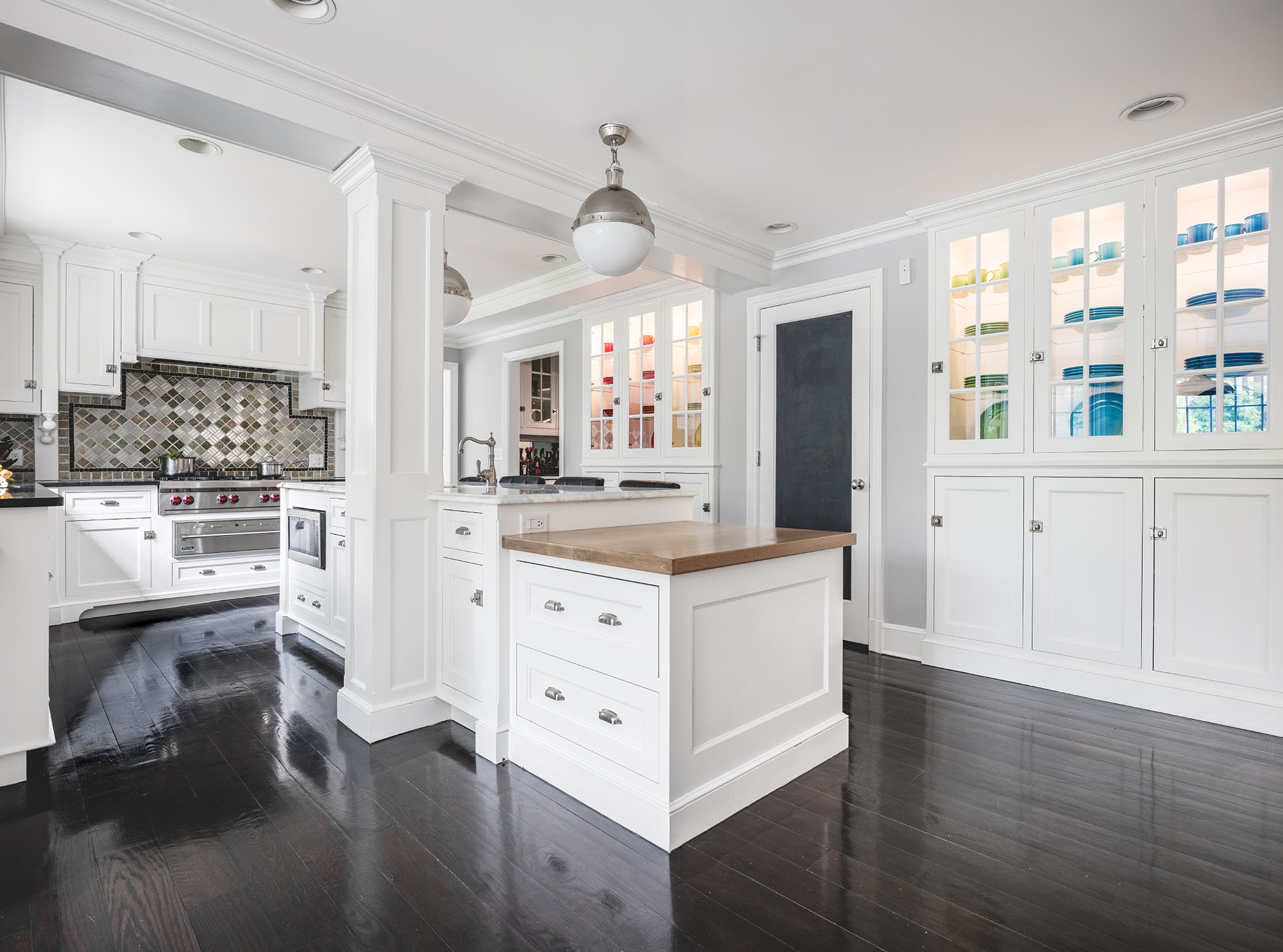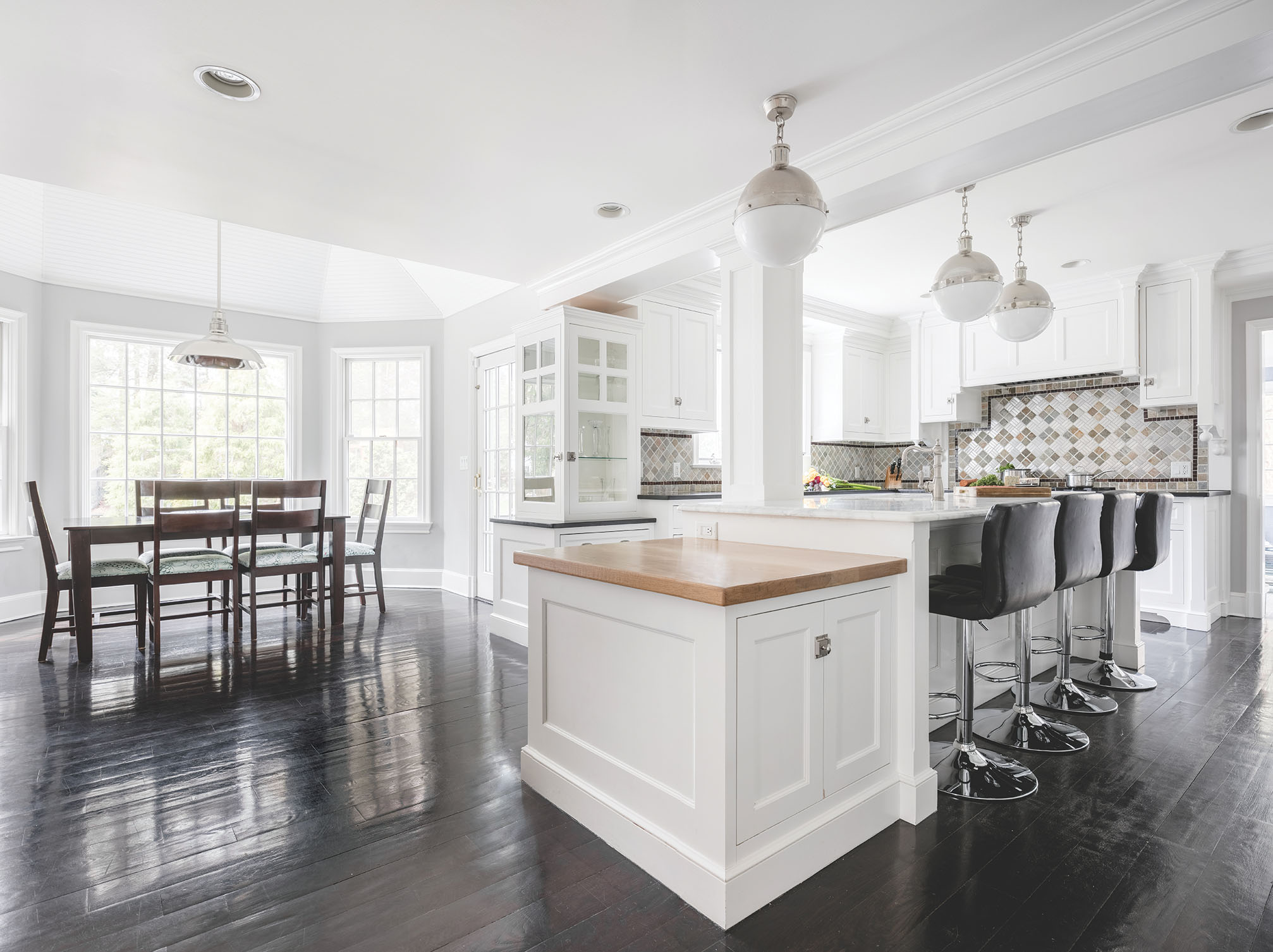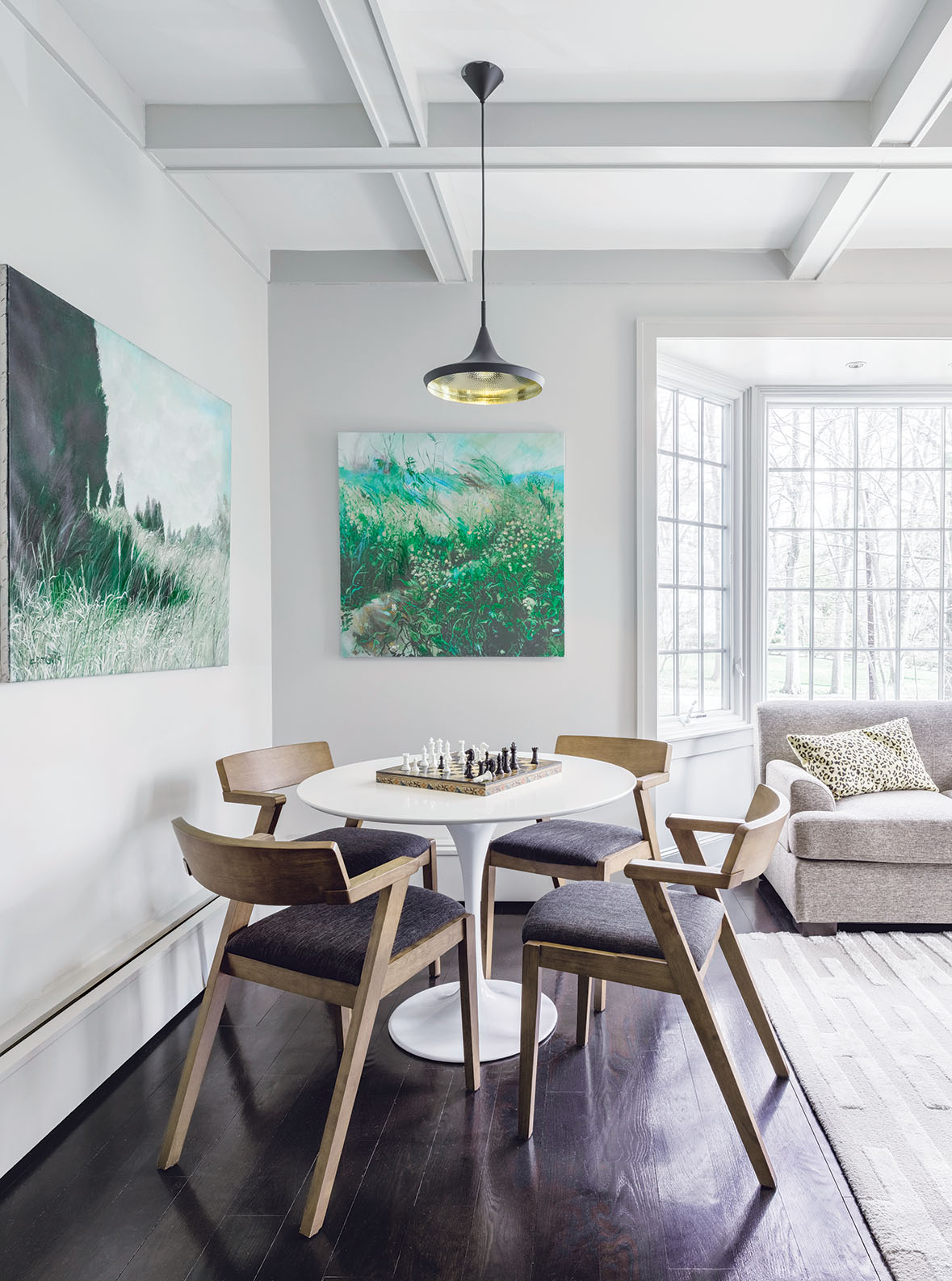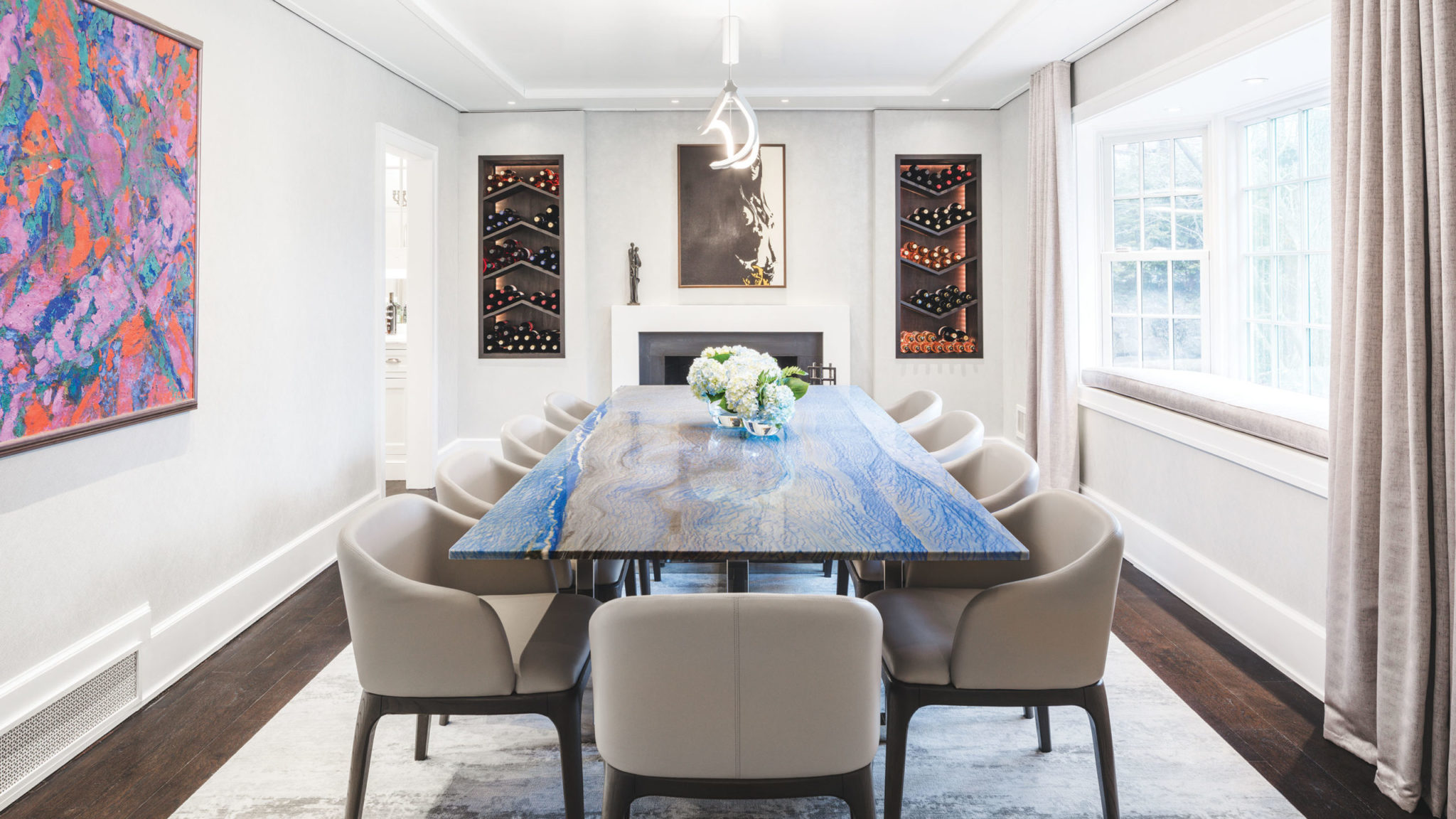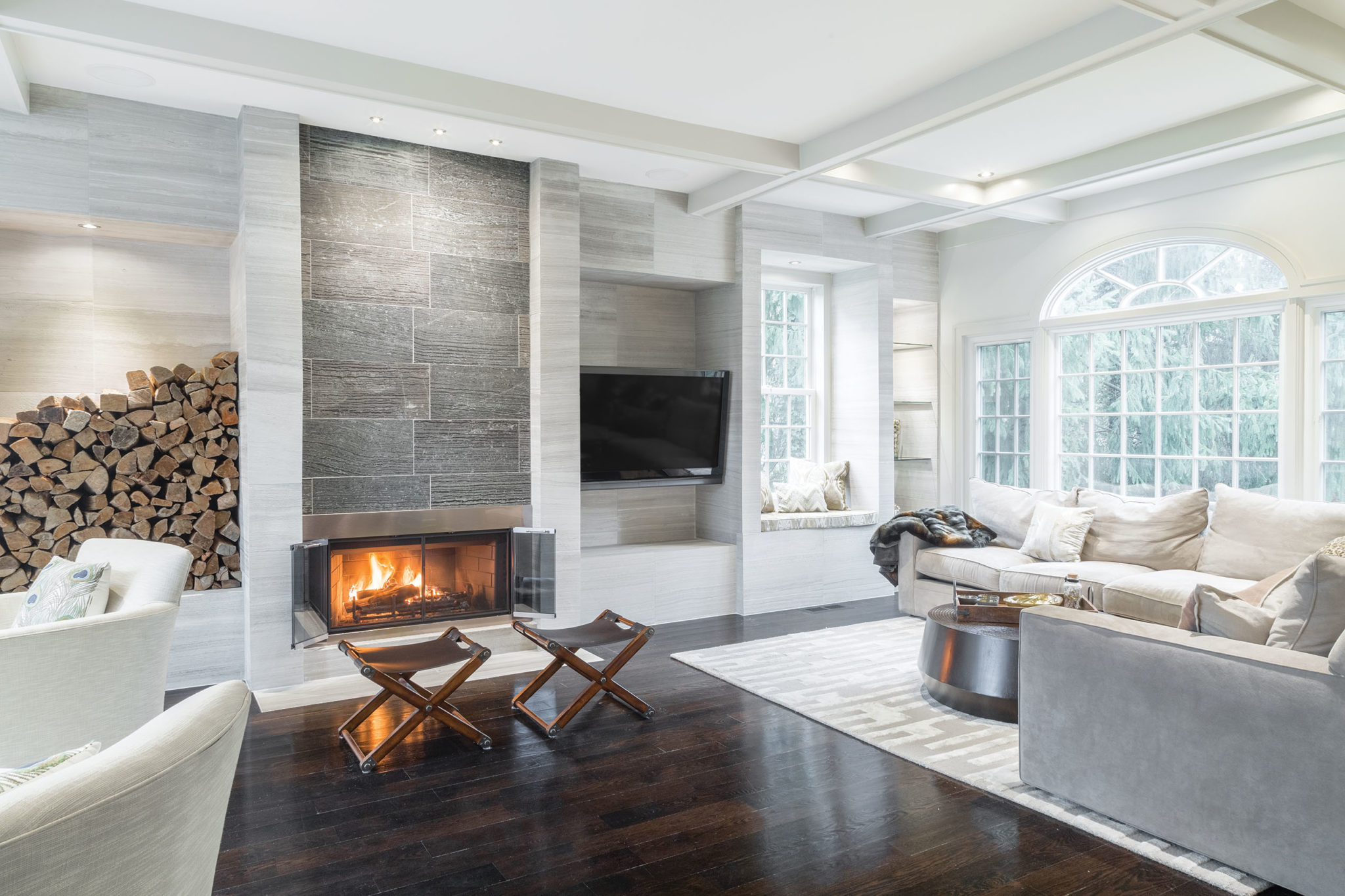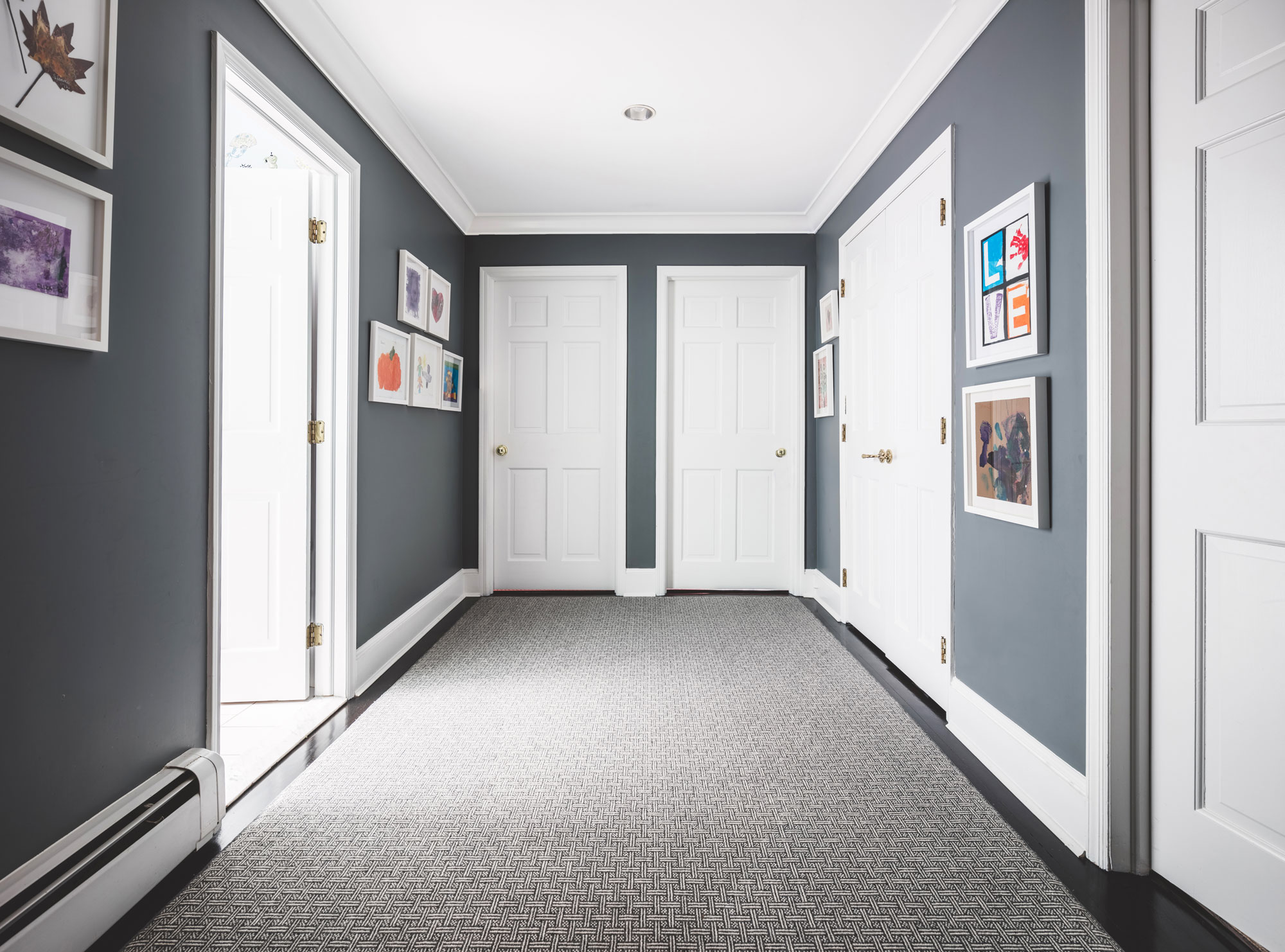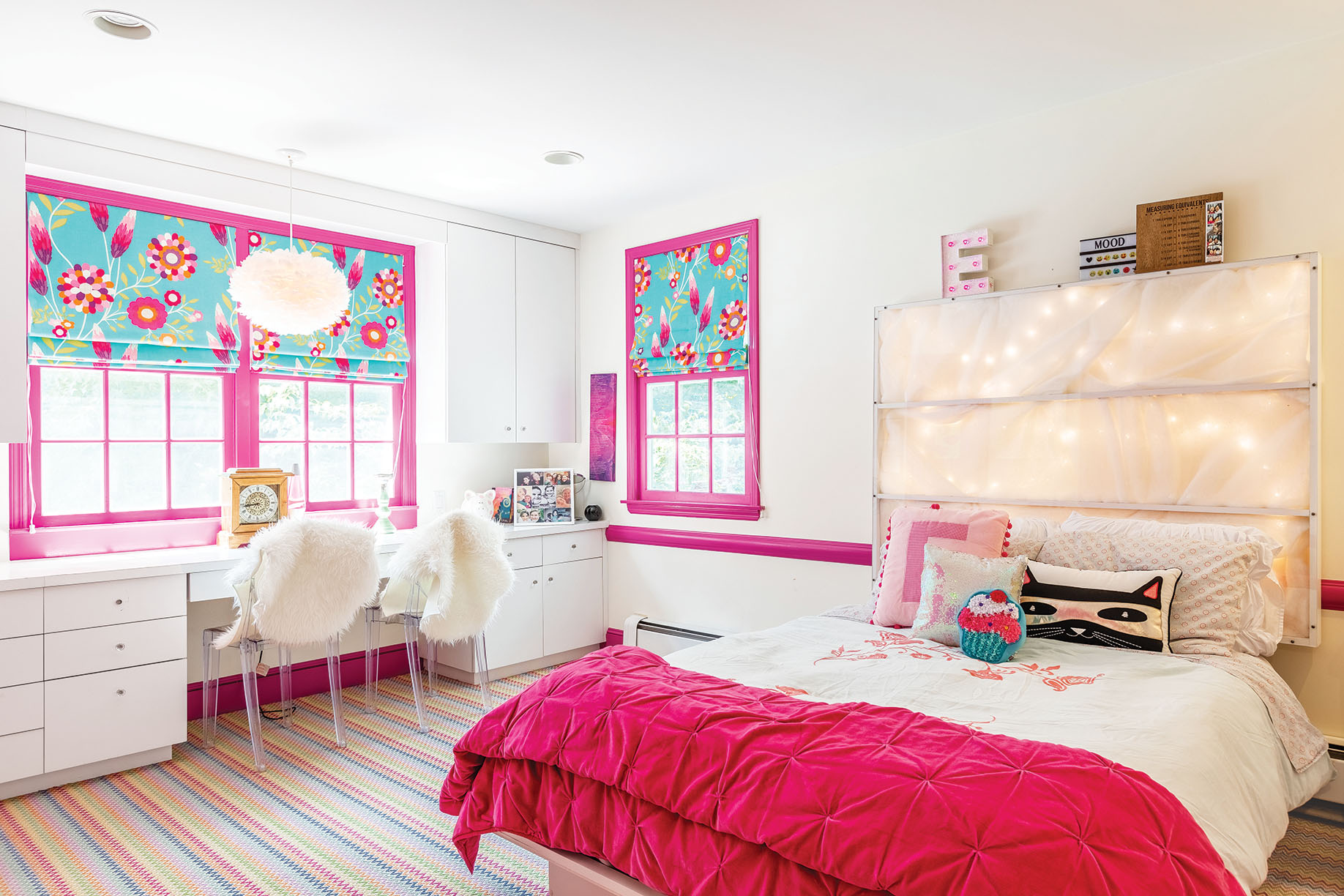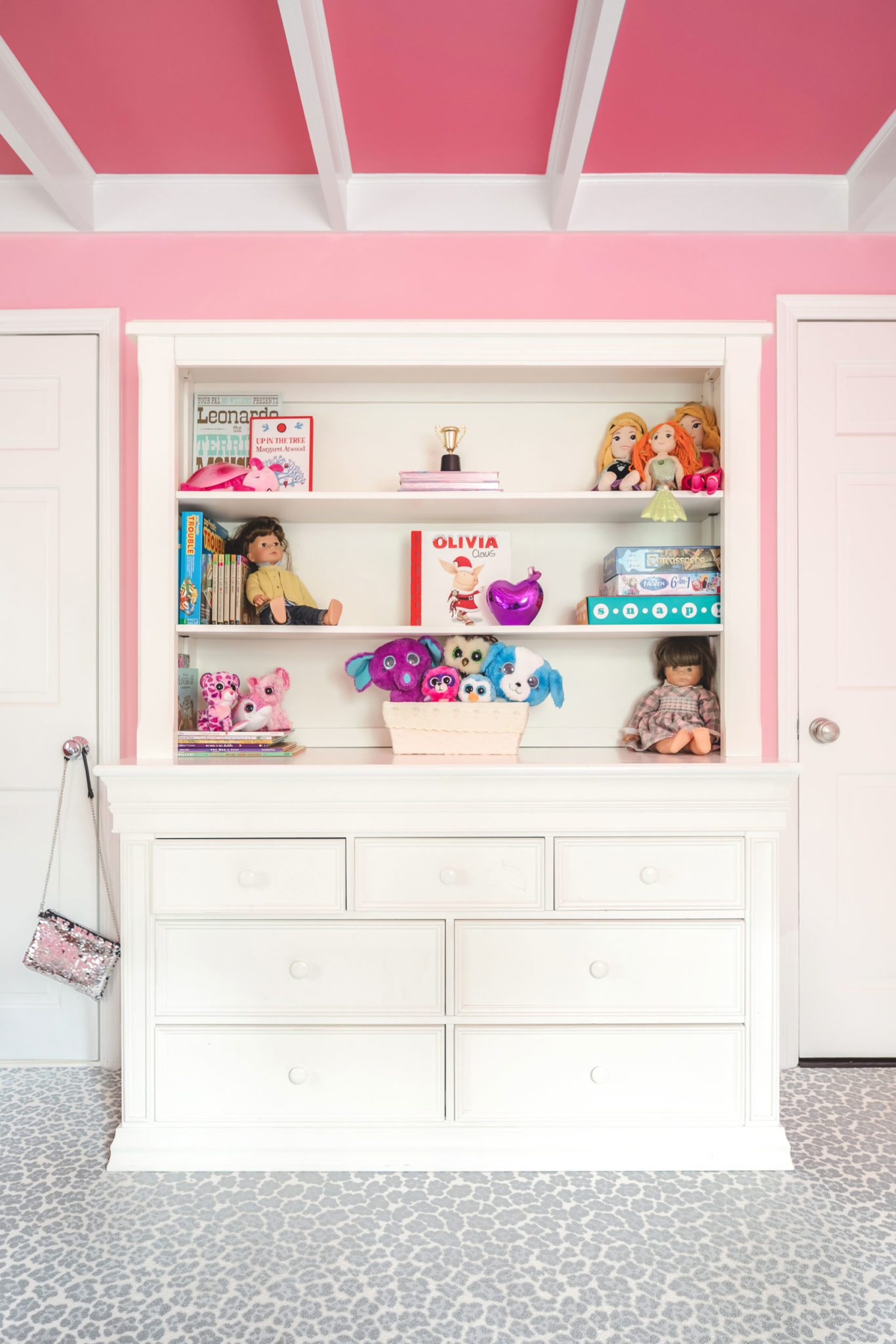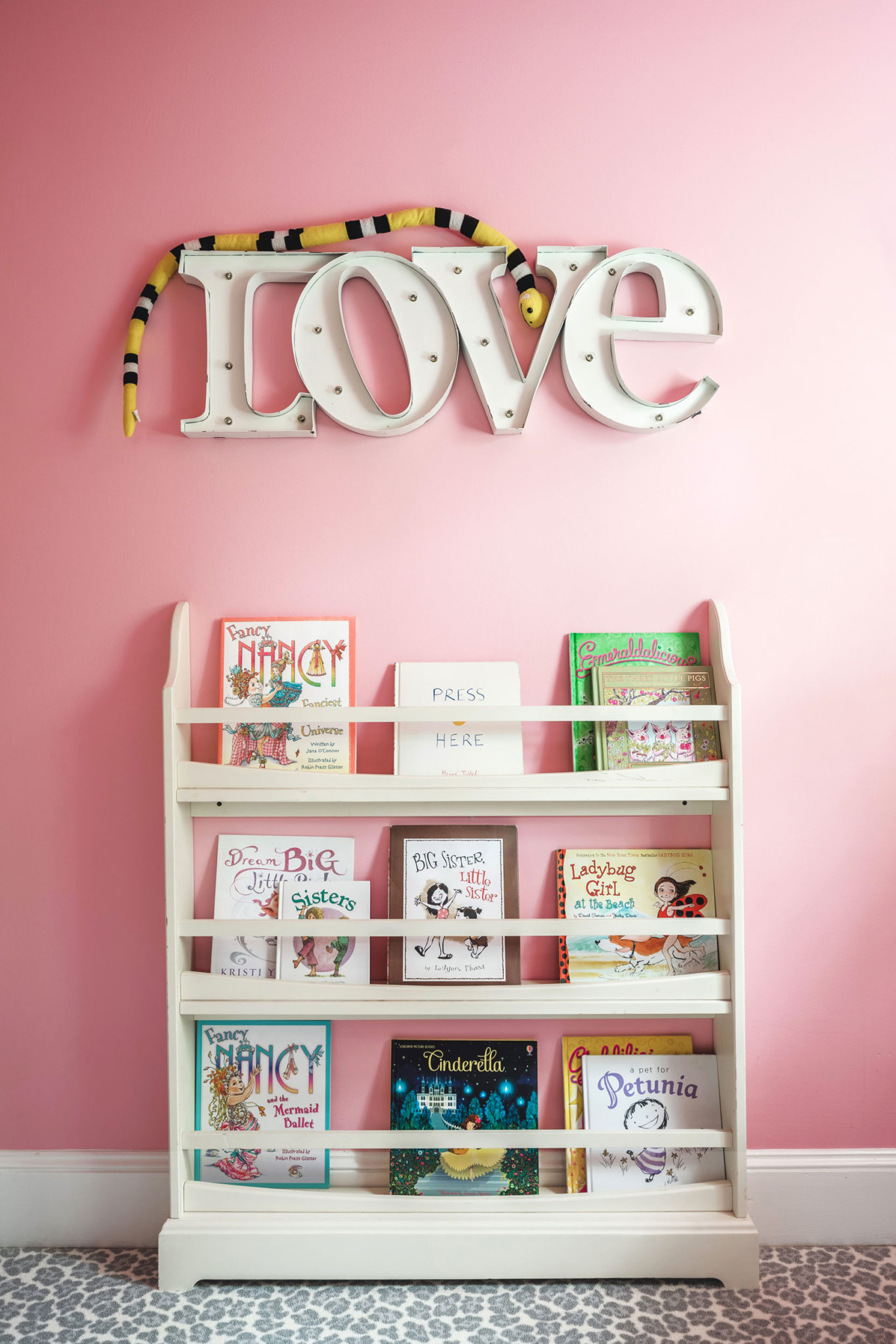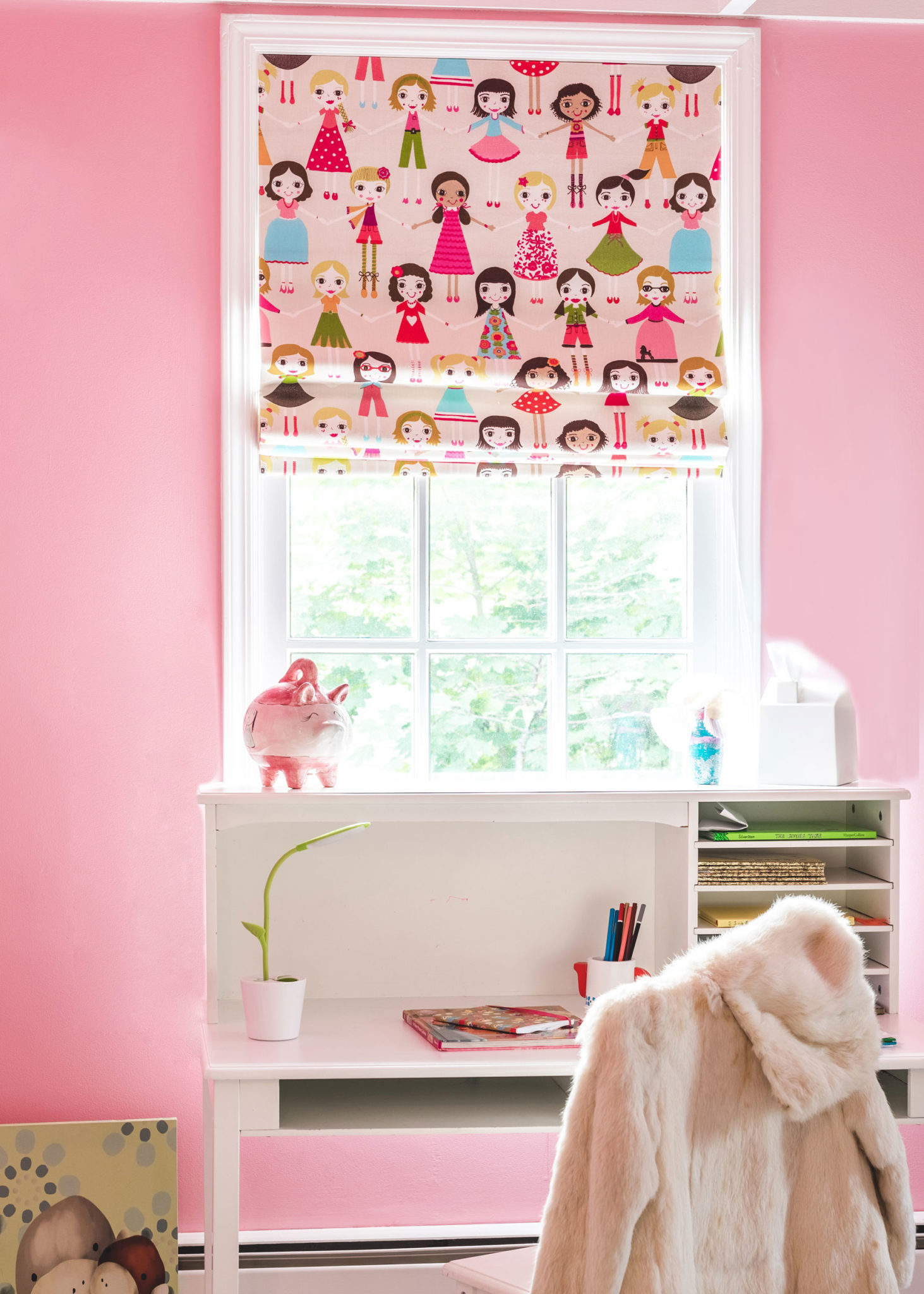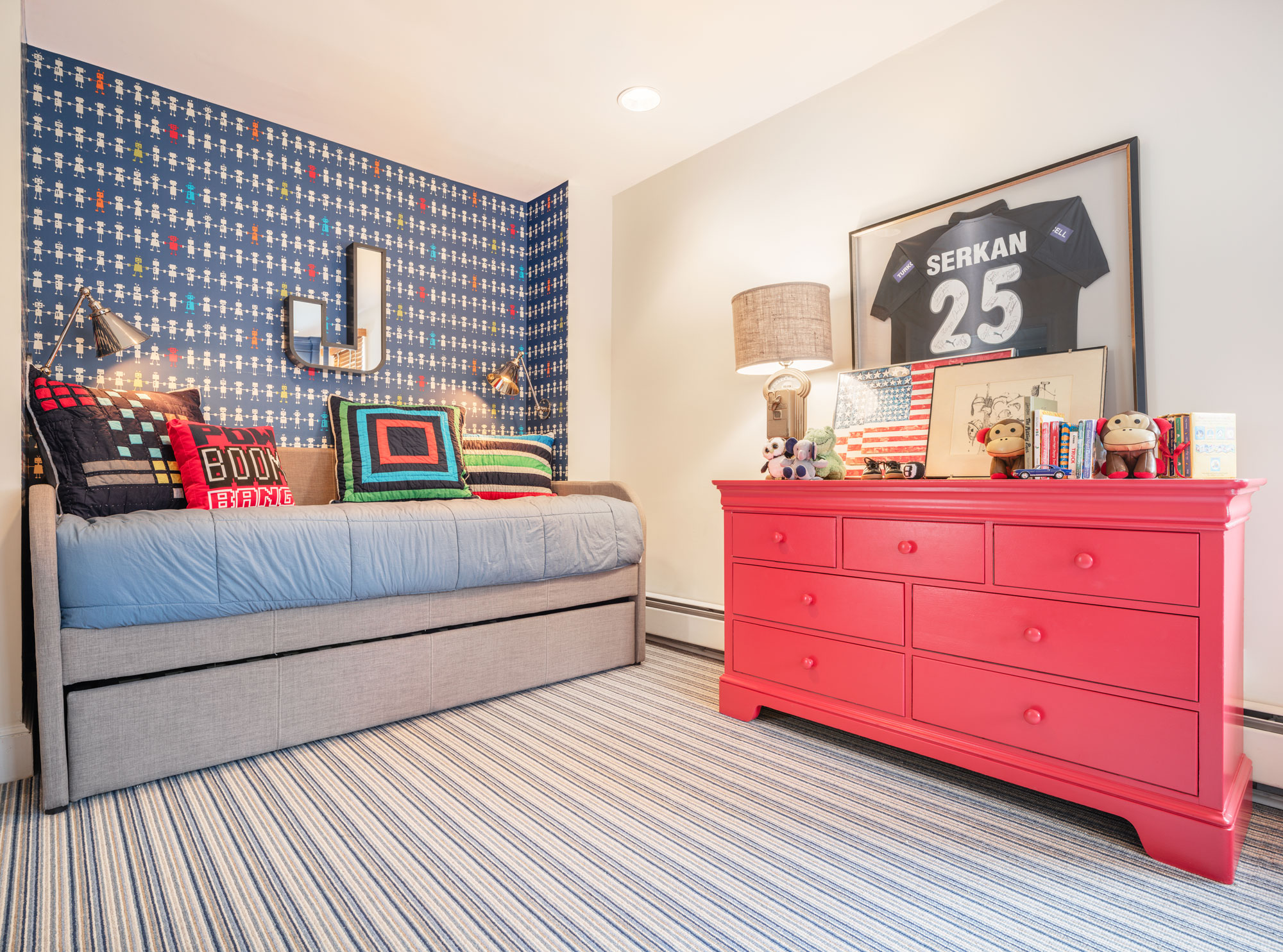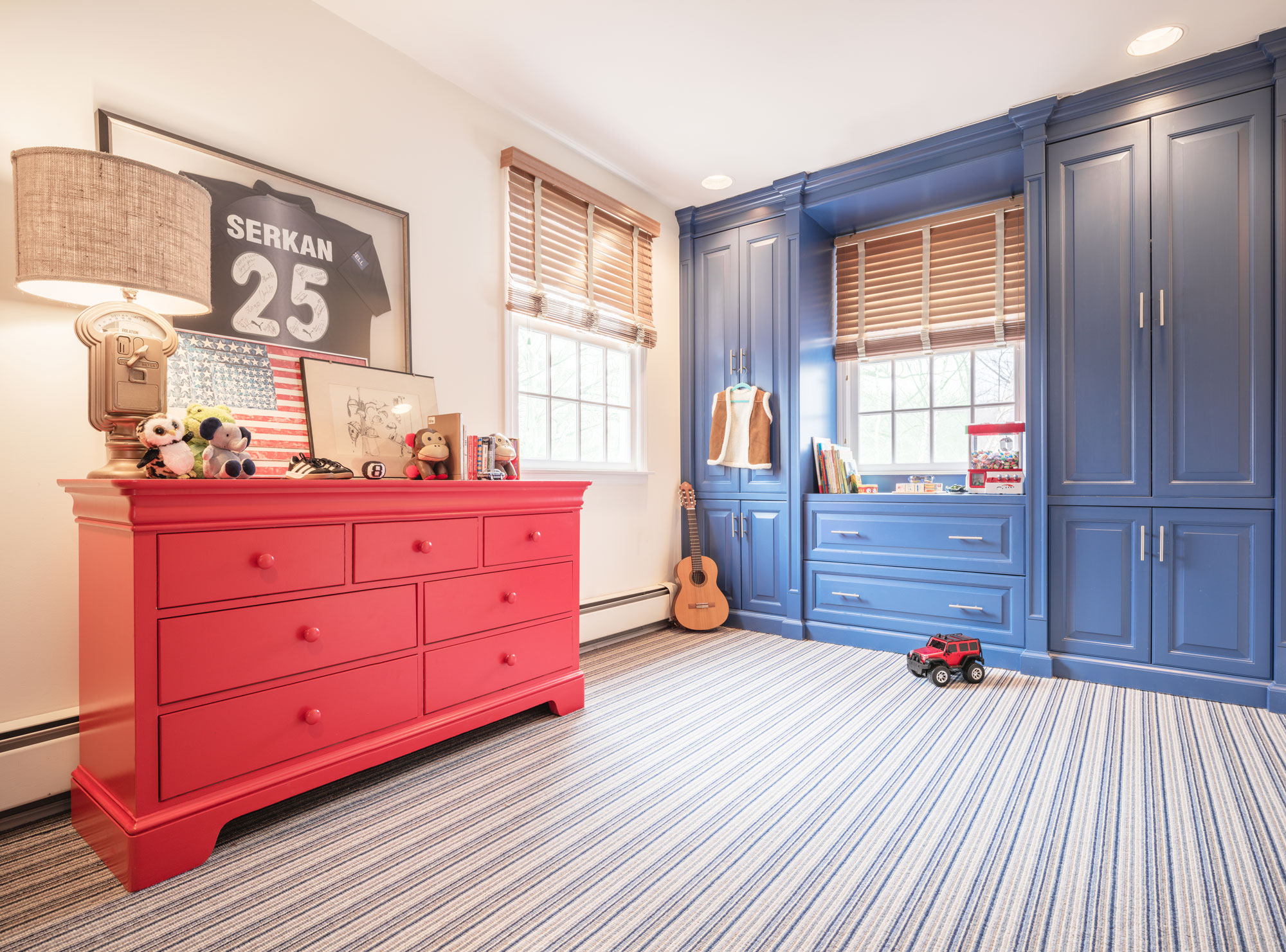A 1930s Colonial in Tenafly Is a Designer’s Dream
Writer Marirose Krall | Photographer Dean Luis Chuqui | Designer Shelley Cekirge | Location Tenafly, NJ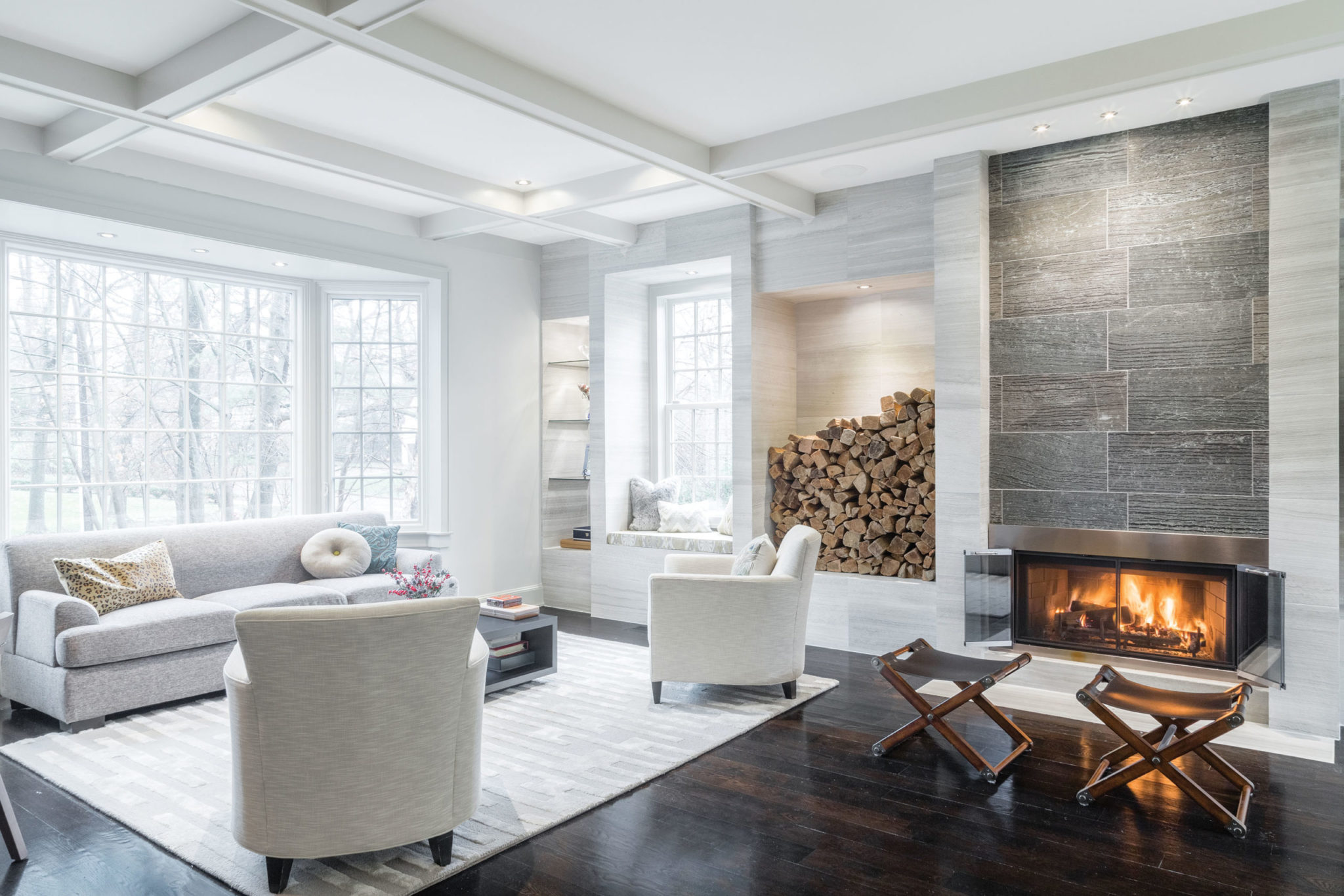
Cekrige removed the previous, dark built-ins and replaced them with a dramatic wall of marble.
In Tenafly, a designer furnishes her dream house
Shelley Cekirge knew immediately that this 1930s Colonial-style home was the one. “It was a really good find,” says the designer, owner of Shelley Cekirge Interiors in Tenafly, New Jersey. The home had been renovated many times over the years, a situation that can result in disaster. But that wasn’t the case this time. “There were a number of additions over the years; they did a fantastic job with all of them.” It was a highly unusual situation for Cekirge. “As a designer, all I ever see are the bones of a house. Everything looks like untapped potential. I have a tendency to just see the outline and what I can make be there, not what is actually there.” In this case, “I didn’t need to do anything structural, which is a huge bonus. This house had good bones.”
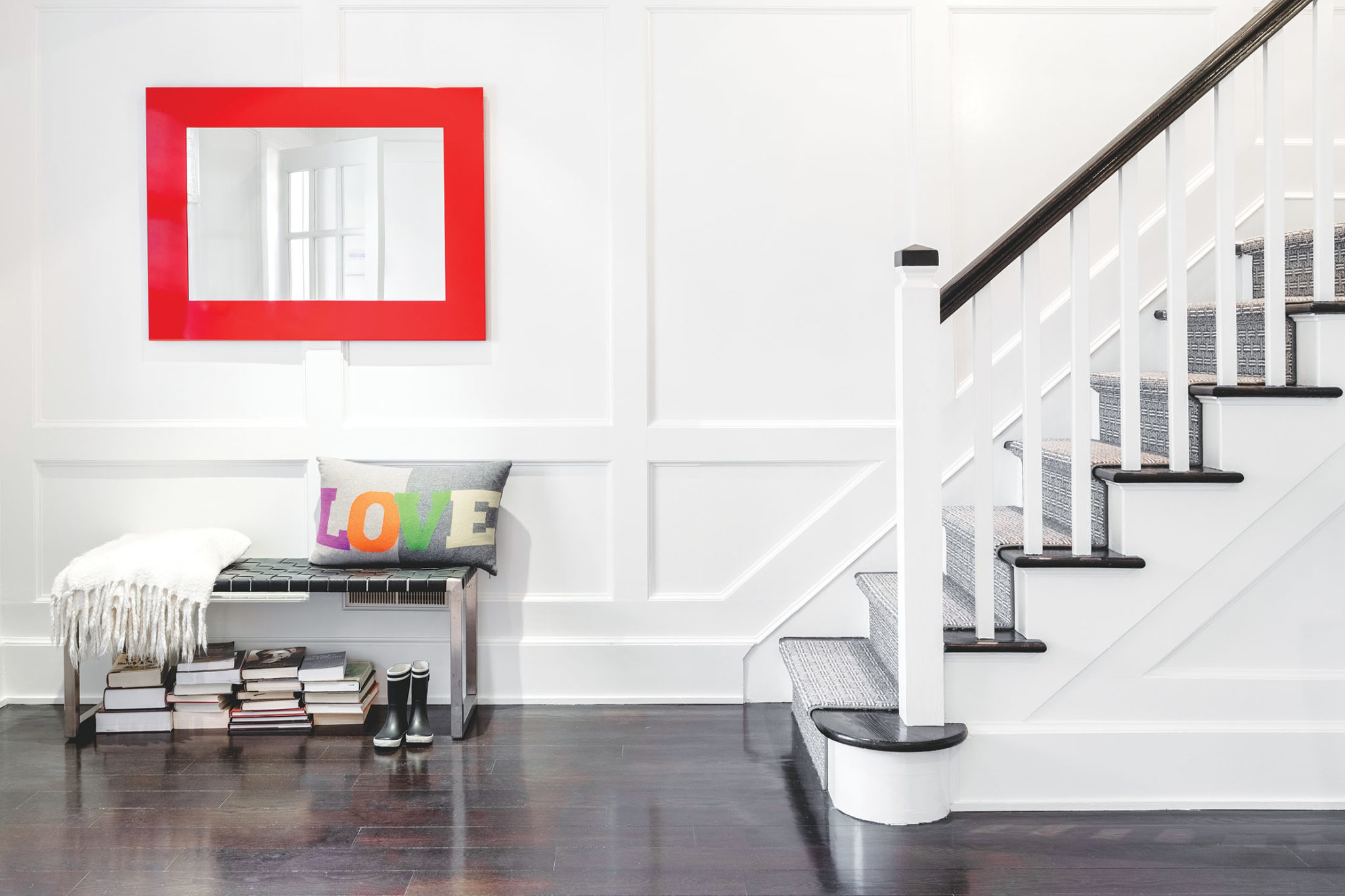
The previous foyer floor had “a checkerboard painted on it.” Cekirge removed that floor and standardized the wood flooring throughout the house.
Those good bones provided a great foundation for the kind of warm, welcoming spaces the designer sought to create. “I wanted it to feel like a place people wanted to be,” she says.
“It was important that it feel bright and comfortable, but also have an elegance so we could all enjoy it together.”
Cekirge has three young children, so she needed the spaces to be practical also. At the same time, she was not willing to skimp on style. “A lot of people don’t want to invest in their home until their kids grow up, but there are ways to work around that and still give the home a very elevated feel.”
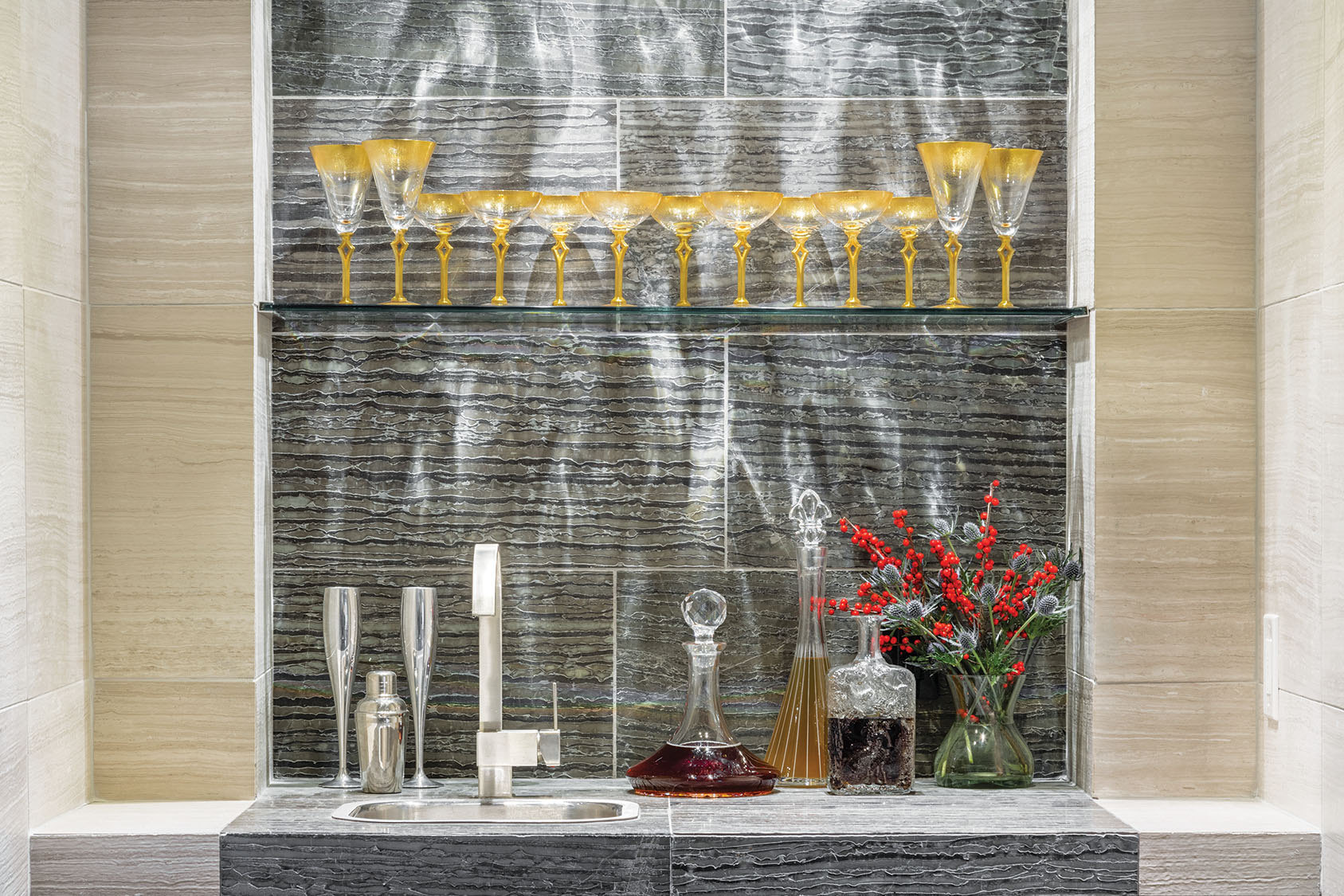
The gold-flecked Art Deco glasses originally belonged to Cekirge’s grandmother. Family lore has it that these particular glasses were included in an exhibit at the Museum of Modern Art in 1939.
The designer fostered that feeling by using a mixture of “high and low” elements, combining mass-market furnishings with custom pieces. The dining room table, for example, “was a labor of love.” Cekirge chose a striking gray and blue marble slab as a topper. “I wanted the table to be the focal point instead of the chairs, which is really uncommon.”
In addition, Cekirge invested in elements with staying power, such as tile. “Tile isn’t going to get ruined,” she notes. Still, she says, it is possible to keep more easily damaged items in good shape. A while back, she says, her kids drew on the living room sectional sofa with a permanent marker. Though the fabric was untreated, Cekirge was able to get the ink out using dish soap and water thanks to “the amazing microfiber fabrics they make now. You don’t have to sacrifice having a nice house just because you have kids.”
It’s not lost on Cekirge that the now-ink-free sofa is white. While that light-colored fabric requires a bit of vigilance, it’s part of her overall design philosophy. “I personally tire of colors very quickly,” she says. “I just feel more at ease with neutrals.” Using a neutral palette as a foundation, the designer “brought in color with artwork and accessories.” The red-framed mirror in the otherwise-sedate foyer is one of her favorite design elements in this house. “I think it’s beautiful. It’s a strong color and I use it very sparingly. I do think it’s very cool as an accent color against dark floors.”
Elsewhere around the house, color appears in small doses. In the kitchen, built-ins display artfully arranged tableware in ordered sets of like tints. Throw pillows in the living room bring in mild hits of color and pattern. Cekirge’s tastes “tend toward earthier and more contemporary homes. Adding sparkle is something I do very sparingly. I love stone and wood. I want my home to look contemporary and clean, not cluttered. I wouldn’t say I’m a stark minimalist at all, but I definitely like to keep the aesthetic clean and consistent.”
The stone and wood aesthetic is nowhere more apparent than in the living room, where a long expanse of marble covers the far wall. The original built-ins were “very dated looking, very dark wood, very traditional,” says the designer, who had a different idea about how that wall should look. “I wanted it to have dimension.” The revamped wall features alcoves in varying heights and depths housing two window seats, a television and firewood storage.
The wall of marble may be lavish and dramatic, but the room is supremely livable. “We wanted to live in a beautiful space, but we definitely did not want to live in a museum,” Cekirge says. “We kept the vibe casual with some wood stools from Pottery Barn and barrel-back chairs from Crate & Barrel.”
The entire home, in fact, is practical, comfortable and stylish. “Functionality is key, but it feels good to be surrounded by elegance too,” Cekirge says, admitting she’s not quite finished bringing her dream house to life. “It still has a lot of work to be done, but I do love the house.”

